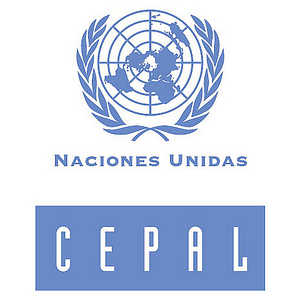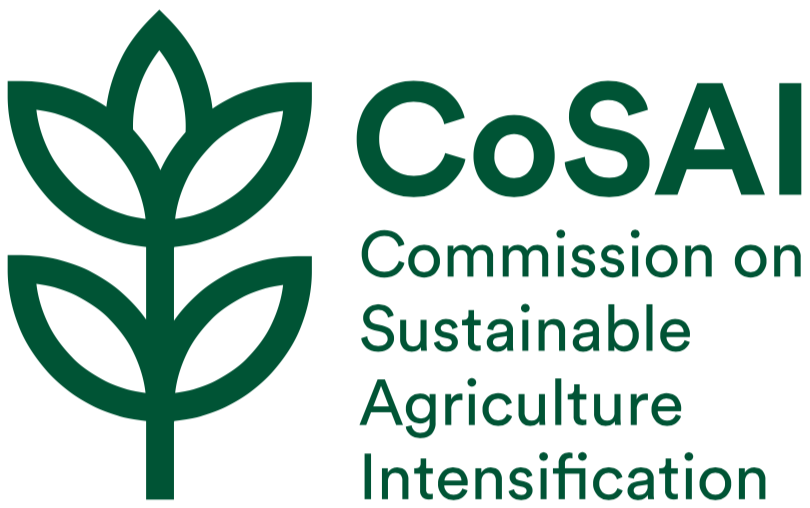Résultats de la recherche
Displaying 1 - 10 of 19 results.
Expert consultation on developing a methodology for assessing agricultural innovation systems (AISs) - Technical report on the meeting
FAO and the Centre de Cooperation Internationale pour la Recherche et le Developpement Agricole (CIRAD) organized an expert consultation workshop on developing a methodology for assessing agricultural innovation systems. The meeting was held on 13–15 June 2018 at CIRAD Headquarters in Paris. It brought together 30 experts from academia, research, extension, the private sector, development agencies and government representatives.
Sujet(s):
Service de vulgarisationrenforcement des capacités (RC)vulgarisationsystèmes d'innovationinnovationapproches participativesrecherchePetits agriculteurs...
Année de publication:
2018Encadenamientos productivos y circuitos cortos: innovaciones en esquemas de producción y comercialización para la agricultura familiar
El presente informe está compuesto por tres partes. La primera parte corresponde a la presentación del marco conceptual y metodológico utilizado en el estudio. La segunda parte, compuesta por cinco capítulos, corresponde al análisis del estado del arte de los Encadenamientos Productivos y Ciclo Corto a nivel internacional.
Sujet(s):
Année de publication:
2016Reorienting funding for research and innovation is an urgent step to transform agri-food systems
Sujet(s):
Année de publication:
2021Mining the gaps: Using machine learning to map 1.2 million agri-food publications from the Global South
The evidence base on agri-food systems is growing exponentially. The CoSAI-commissioned study, Mining the Gaps, applied artificial intelligence to mine more than 1.2 million publications for data, creating a clearer picture of what research has been conducted on small-scale farming and post-production systems from 2000 to the present, and where evidence gaps exist.
Sujet(s):
Année de publication:
2021Better instruments and approaches are needed to transform agri-food systems research and innovation
A range of approaches and financial instruments have been used to stimulate and support innovation in agriculture and resolve interlocking constraints for uptake at scale. These include innovation platforms, results-based payments, value chain approaches, grants and prizes, incubators, participatory work with farmer networks, and many more.
Sujet(s):
Année de publication:
2021Learning from agri-food innovation pathways in Brazil, India and Kenya
Innovation for sustainable agricultural intensification (SAI) is challenging. Changing agricultural systems at scale normally means working with partners at different levels to make changes in policies and social institutions, along with technical practices. This study extracts lessons for practitioners and investors in innovation in SAI, based on concrete examples, to guide future investment.
Sujet(s):
Année de publication:
2022Eight research and innovation principles for sustainable and equitable agri-food systems
A huge increase in investment in innovation for agricultural systems is critical to meet the Sustainable Development Goals and Paris Climate Agreement. Most of this increase needs to come from reorienting existing funding for innovation. However, understanding whether an investment will fully promote environmentally sustainable and equitable agri-food systems can be difficult.
Sujet(s):
Année de publication:
2022Innovation in farm reward mechanisms is pivotal for transforming agriculture to protect and restore nature in the Global South
Finance is a key lever for turning agriculture from a potential source of environmental harm and social inequity to a driver of conservation and social inclusiveness. Private and public sector funding for farmers to combat climate change and protect and restore nature (‘Paying for Nature’) is rapidly increasing. Yet this new funding may not reach its aims without drastically improving farm-level reward mechanisms.
Sujet(s):
Année de publication:
2022Priority investments for innovation in urban and peri-urban agriculture (UPA) and food systems in the Global South
By 2050, it is projected that nearly 70% of the global population will live in urban areas – up from 55% today. How can towns and cities be fed sustainably? And what does this urban growth mean for innovation priorities? A study of urban and peri-urban agriculture (UPA), commissioned by CoSAI, addressed these questions.
Sujet(s):
Année de publication:
2022Pages
Sorting block
Filtrer par idiome
Filtrer par sujet(s)
- advisory services (1) Apply advisory services filter advisory services
- capacity development (CD) (1) Apply capacity development (CD) filter capacity development (CD)
- climate change (1) Apply climate change filter climate change
- extension (2) Apply extension filter extension
- food and nutrition security (1) Apply food and nutrition security filter food and nutrition security
- innovation systems (13) Apply innovation systems filter innovation systems
- knowledge and information systems (2) Apply knowledge and information systems filter knowledge and information systems
- learning (3) Apply learning filter learning
- needs assessment (1) Apply needs assessment filter needs assessment
- networks (1) Apply networks filter networks
- participatory approaches (1) Apply participatory approaches filter participatory approaches
- policies (2) Apply policies filter policies
- research (6) Apply research filter research
- sustainable agriculture (6) Apply sustainable agriculture filter sustainable agriculture
- value chains (2) Apply value chains filter value chains
Filtrer par auteur(s)
- (-) Remove Commission on Sustainable Agriculture Intensification (CoSAI) filter Commission on Sustainable Agriculture Intensification (CoSAI)Commission on Sustainable Agriculture Intensification (CoSAI)
- Adekunle A. A. (9) Apply Adekunle A. A. filter Adekunle A. A.
- Agrinatura (43) Apply Agrinatura filter Agrinatura
- Aguilar-Ávila J. (10) Apply Aguilar-Ávila J. filter Aguilar-Ávila J.
- Asia-Pacific Islands Rural Advisory Services Network (APIRAS) (12) Apply Asia-Pacific Islands Rural Advisory Services Network (APIRAS) filter Asia-Pacific Islands Rural Advisory Services Network (APIRAS)
- CDAIS project (98) Apply CDAIS project filter CDAIS project
- Chia E. (10) Apply Chia E. filter Chia E.
- Devaux A. (10) Apply Devaux A. filter Devaux A.
- Dhehibi B. (11) Apply Dhehibi B. filter Dhehibi B.
- Dror I. (24) Apply Dror I. filter Dror I.
- Fatunbi O. (15) Apply Fatunbi O. filter Fatunbi O.
- Faure G. (10) Apply Faure G. filter Faure G.
- Food and Agriculture Organization of the United Nations (12) Apply Food and Agriculture Organization of the United Nations filter Food and Agriculture Organization of the United Nations
- Food and Agriculture Organization of the United Nations (17) Apply Food and Agriculture Organization of the United Nations filter Food and Agriculture Organization of the United Nations
- Food and Agriculture Organization of the United Nations (FAO) (142) Apply Food and Agriculture Organization of the United Nations (FAO) filter Food and Agriculture Organization of the United Nations (FAO)
- Food and Agriculture Organization of the United Nations ( FAO ) (81) Apply Food and Agriculture Organization of the United Nations ( FAO ) filter Food and Agriculture Organization of the United Nations ( FAO )
- Hall, A. (24) Apply Hall, A. filter Hall, A.
- Hall A. (12) Apply Hall A. filter Hall A.
- Hoekstra D. (11) Apply Hoekstra D. filter Hoekstra D.
- IICA (48) Apply IICA filter IICA
- International Fund for Agricultural Development (18) Apply International Fund for Agricultural Development filter International Fund for Agricultural Development
- International Fund for Agricultural Development (IFAD) (13) Apply International Fund for Agricultural Development (IFAD) filter International Fund for Agricultural Development (IFAD)
- International Livestock Research Institute (10) Apply International Livestock Research Institute filter International Livestock Research Institute
- Klerkx L. (47) Apply Klerkx L. filter Klerkx L.
- Klerkx, L. (25) Apply Klerkx, L. filter Klerkx, L.
- Landini, F. (11) Apply Landini, F. filter Landini, F.
- Latin American Network for Rural Extension Services (RELASER) (14) Apply Latin American Network for Rural Extension Services (RELASER) filter Latin American Network for Rural Extension Services (RELASER)
- Leeuwis C. (16) Apply Leeuwis C. filter Leeuwis C.
- Leeuwis, C. (15) Apply Leeuwis, C. filter Leeuwis, C.
- Lundy M. (18) Apply Lundy M. filter Lundy M.
- Nichterlein K. (9) Apply Nichterlein K. filter Nichterlein K.
- Ojijo N.K.O. (13) Apply Ojijo N.K.O. filter Ojijo N.K.O.
- Organisation for Economic Co-operation and Development (12) Apply Organisation for Economic Co-operation and Development filter Organisation for Economic Co-operation and Development
- Qaim M. (58) Apply Qaim M. filter Qaim M.
- Rendon-Medel R. (11) Apply Rendon-Medel R. filter Rendon-Medel R.
- Sartas M. (16) Apply Sartas M. filter Sartas M.
- Schut, M. (10) Apply Schut, M. filter Schut, M.
- Schut M. (44) Apply Schut M. filter Schut M.
- Sulaiman, R. V. (19) Apply Sulaiman, R. V. filter Sulaiman, R. V.
- Sulaiman R. V. (11) Apply Sulaiman R. V. filter Sulaiman R. V.
- TAP Secretariat (26) Apply TAP Secretariat filter TAP Secretariat
- Temple L. (14) Apply Temple L. filter Temple L.
- The World Bank (13) Apply The World Bank filter The World Bank
- Triomphe B. (9) Apply Triomphe B. filter Triomphe B.
- Tropical Agriculture Platform (TAP) (43) Apply Tropical Agriculture Platform (TAP) filter Tropical Agriculture Platform (TAP)
- University of Evora (13) Apply University of Evora filter University of Evora
- various authors (44) Apply various authors filter various authors
- Velasco C. (9) Apply Velasco C. filter Velasco C.
- World Bank (61) Apply World Bank filter World Bank
- World Bank Group (18) Apply World Bank Group filter World Bank Group
Filtrer par pays
Filtrer par éditeur(s)
- Commission on Sustainable Agriculture Intensification (17) Apply Commission on Sustainable Agriculture Intensification filter Commission on Sustainable Agriculture Intensification
- Centre de coopération internationale en recherche agronomique pour le développement (CIRAD) (1) Apply Centre de coopération internationale en recherche agronomique pour le développement (CIRAD) filter Centre de coopération internationale en recherche agronomique pour le développement (CIRAD)
- Comisión Económica para América Latina y el Caribe (CEPAL) (1) Apply Comisión Económica para América Latina y el Caribe (CEPAL) filter Comisión Económica para América Latina y el Caribe (CEPAL)
- Foreign, Commonwealth & Development Office (1) Apply Foreign, Commonwealth & Development Office filter Foreign, Commonwealth & Development Office
- International Food Policy Research Institute (1) Apply International Food Policy Research Institute filter International Food Policy Research Institute
- United States Department of Agriculture (1) Apply United States Department of Agriculture filter United States Department of Agriculture



